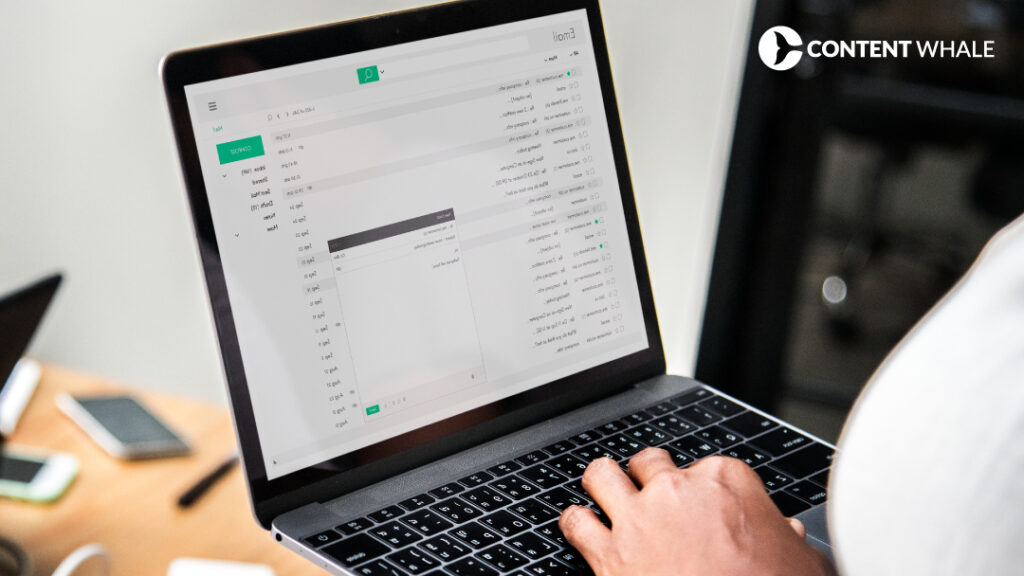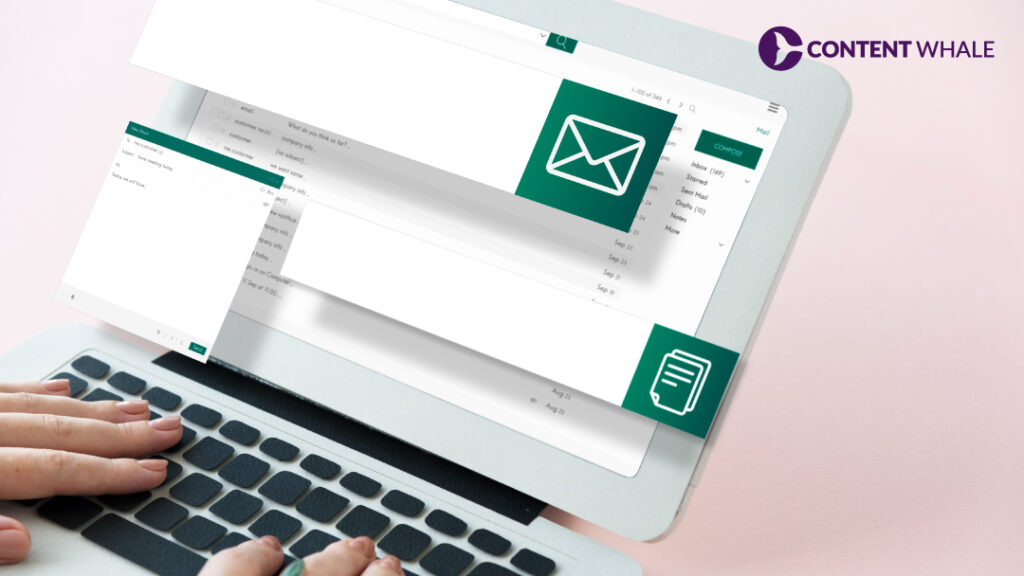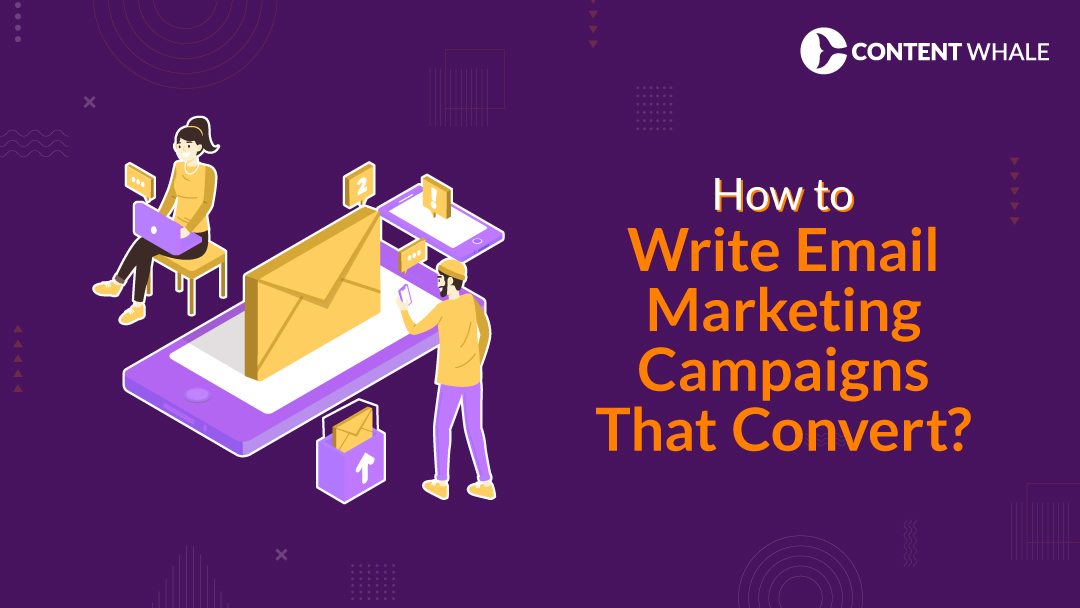Quick Summary
Understanding the key components of effective email marketing campaigns is essential. This guide covers crafting compelling email subject lines and engaging email content and explores strategies for increasing email engagement. Learn about tools and email marketing best practices for success. Follow a step-by-step approach to writing and optimizing your emails. By implementing these email campaign tips, you can enhance your email marketing strategy and achieve better results.
Email marketing is a key part of any digital marketing strategy. It provides a direct way to connect with your audience, driving engagement and sales. Email marketing campaigns are effective tools for reaching and converting customers. They offer personalized communication and measurable results.
A well-crafted email marketing strategy can boost brand awareness, foster customer loyalty, and increase conversions. This guide will teach you how to create impactful emails. You’ll learn email campaign tips, how to write compelling email subject lines, and effective email copywriting techniques. We’ll also cover email marketing best practices and ways to enhance email engagement.
This guide is packed with practical advice and actionable steps. By the end, you’ll be ready to launch email marketing campaigns that convert.
Understanding the Basics of Email Marketing
Email marketing campaigns are essential for building strong customer relationships and driving sales. They involve sending targeted messages to your subscribers and are a key part of any email marketing strategy.
There are several types of email marketing campaigns:
- Newsletters: Regular updates about your business, industry news, and valuable content.
- Promotional Emails: Offers, discounts, and promotions to boost sales.
- Transactional Emails: Order confirmations, receipts, and customer service communications.
Tracking key metrics is vital for success. Important metrics include:
- Open Rates: The percentage of recipients who open your email.
- Click-Through Rates (CTR): The percentage of recipients who click on links within your email.
- Conversion Rates: The percentage of recipients who take the desired action, such as making a purchase.
These metrics provide insights into the effectiveness of your email marketing strategy. Higher open rates indicate strong email subject lines. High CTR and conversion rates show effective email copywriting and engaging content.
Understanding these basics helps you create better email marketing campaigns. A solid foundation in these principles is the first step toward improving email engagement and achieving your marketing goals.
Focusing on these key areas can help you develop an effective email marketing strategy. This strategy will guide your efforts, helping you connect with your audience and achieve better results. Remember, successful email marketing requires continuous improvement and adaptation.
Crafting Compelling Subject Lines

1. Importance of Subject Lines
Email subject lines are crucial for the success of email marketing campaigns. They are the first thing recipients see and significantly impact open rates. A compelling subject line can make the difference between your email being opened or ignored.
2. Tips for Writing Attention-Grabbing Subject Lines
Here are some email campaign tips for writing effective email subject lines:
- Be Clear and Direct: Ensure the subject line clearly conveys the email’s content.
- Create Urgency: Use phrases that encourage immediate action, like “Limited Time Offer” or “Act Now.”
- Personalize: Include the recipient’s name or relevant details to catch their attention.
- Keep It Short: Aim for 50 characters or less to ensure the entire subject line is visible, especially on mobile devices.
3. Examples of Effective Subject Lines
Examples of effective email subject lines:
- “Limited Time Offer: Save 20% Today!”
- “John, Your Exclusive Guide to Summer Trends”
- “Don’t Miss Out: Insider Tips Just for You”
4. A/B Testing for Optimal Performance
A/B testing your email subject lines is essential. This involves sending different versions to small segments of your audience to see which performs better. Use the winning subject line for the rest of your campaign. This method ensures you use the most effective subject line possible.
5. Avoiding Spam Triggers
Another important email marketing strategy is avoiding spammy language. Words like “free,” “win,” or “urgent” can trigger spam filters and prevent your email from reaching the inbox. Use clear and honest language to maintain credibility and ensure deliverability.
6. Combining Best Practices
Combining these email marketing best practices will help you craft email subject lines that boost open rates and enhance email engagement. Remember, your subject line sets the tone for the entire email. Investing time and effort into crafting compelling subject lines is crucial for the success of your email marketing campaigns.
By following these tips, you can significantly improve the effectiveness of your email marketing strategy. Compelling subject lines leads to higher open rates, which is the first step toward increasing email engagement and conversions.
Writing Engaging Email Content

Engaging content is vital for successful email marketing campaigns. Start by understanding your audience. Tailor your message to their needs and interests. Personalized content increases email engagement.
1. Be Clear and Concise
Keep your message straightforward. Avoid lengthy paragraphs. Short sentences are easier to read and understand. Ensure your content gets straight to the point, providing value from the first sentence.
2. Personalize Your Message
Use segmentation to send relevant content to different subscriber groups. Personalization goes beyond just using the recipient’s name. Segment your audience based on behavior, preferences, and demographics. This approach makes your content more relevant and engaging.
3. Include a Strong CTA
A strong call-to-action (CTA) is crucial. Guide your readers towards the desired action. Use action-oriented language like “Shop Now,” “Learn More,” or “Sign Up Today.” Make your CTA stand out by using buttons or distinct colors.
4. Use Visuals and Multimedia
Visuals and multimedia can boost email engagement. Images, videos, and infographics make your emails more appealing and can help convey your message more effectively. Ensure all visuals are optimized for fast loading times and mobile devices.
5. Effective Email Copywriting Tips
Effective email copywriting involves clear and direct language. Avoid jargon and keep sentences short. Make your content easy to read. Use bullet points or numbered lists to break up text. Here are some additional tips:
- Write in a Conversational Tone: Make your emails feel personal and approachable.
- Focus on Benefits: Highlight what the reader will gain from your email.
- Test Different Formats: Experiment with different structures to see what works best for your audience.
Applying these email marketing best practices will help you create engaging content. Engaging content keeps your audience interested and drives action. It’s a key component of a successful email marketing strategy.
By following these tips, you can improve your email marketing campaigns. Tailored, clear, and visually appealing content will enhance email engagement and drive better results. Remember, the goal is to connect with your audience and encourage them to take action.
Strategies for Increasing Email Engagement

Boosting email engagement is key for successful email marketing campaigns. Here are some email campaign tips to help you achieve higher engagement rates.
1. Optimize Design and Layout
Ensure your emails are visually appealing and mobile-friendly. Use a clean, professional design with clear headings and ample white space. A well-designed email is easier to read and more engaging. Stick to a consistent color scheme and font style that align with your brand. Include your logo and use responsive design to ensure your emails look good on all devices.
2. Send at the Right Time
Test different send times to find when your audience is most responsive. Timing can significantly impact open rates and email engagement. Generally, mid-week mornings tend to perform well, but this can vary. Use analytics to track when your emails are opened and adjust your strategy accordingly. Consistent testing helps identify the optimal send times for your specific audience.
3. Encourage Interaction
Use interactive elements like polls, surveys, and quizzes. These elements can increase engagement and make your emails more interesting. Ask for feedback on products or services to show you value your subscribers’ opinions. Interactive content not only engages but also provides valuable insights into your audience’s preferences.
4. Re-engage Inactive Subscribers
Send targeted campaigns to subscribers who haven’t engaged with your emails for a while. Offer incentives like discounts or exclusive content to regain their interest. Create a win-back campaign specifically designed to re-engage these subscribers. Personalize the message to address why they might have lost interest and highlight new benefits or updates.
5. Segment Your Audience
Segmentation allows you to send more relevant content to different groups. Tailored messages are more likely to resonate and drive engagement. Segment your list based on demographics, purchase history, or engagement level. This practice ensures each segment receives content that is most relevant to them, increasing the likelihood of engagement.
6. Personalize Your Emails
Personalization goes beyond using the recipient’s name. Use data to customize content based on preferences, behavior, and demographics. Dynamic content blocks can show different images or text to different segments of your list. Personalized emails show higher engagement rates and create a more connected experience for your subscribers.
7. Include Strong CTAs
Clear and compelling calls to action guide recipients toward the desired action. Make your CTAs stand out and use action-oriented language. Use contrasting colors for your CTA buttons to make them pop. Be specific in your language, like “Download Your Free Guide” or “Claim Your Discount Now.”
8. Test and Optimize
Regularly perform A/B tests on different elements of your emails, such as subject lines, content, and CTAs. Use the insights to improve future campaigns. Test one element at a time to see which variation performs best. Continuous testing and optimization lead to steady improvements in your email marketing strategy.
9. Use Visuals Wisely
Images and videos can make your emails more engaging. Ensure they are relevant and add value to your message. Use high-quality images and keep file sizes small to avoid slow load times. Videos can be particularly engaging but make sure they are optimized for email.
10. Email Copywriting
Good email copywriting is clear and concise. Use short sentences and paragraphs to keep your message easy to read. Focus on the reader’s benefits and use a friendly, conversational tone. Break up text with subheadings and bullet points to make the content more scannable.
By applying these email marketing best practices, you can enhance email engagement and achieve better results from your email marketing campaigns. Engaging emails not only capture attention but also drive action, helping you reach your marketing goals.
Tools and Resources for Email Marketing

Selecting the right tools is crucial for effective email marketing campaigns. The right tools and resources can simplify your workflow and boost your results. Here are some email campaign tips on the best tools available.
1. Tools for Email Marketing
Mailchimp
Mailchimp is known for its user-friendly interface and powerful features. It offers automation, analytics, and detailed reporting. With easy-to-use templates and advanced segmentation, Mailchimp supports an effective email marketing strategy.
Constant Contact
Constant Contact is perfect for small businesses. It provides comprehensive email templates, social media integration, and useful insights. This tool helps you streamline email marketing campaigns and measure their success.
Brevo
Brevo excels in advanced segmentation and personalization. It’s a versatile tool, ideal for businesses aiming to improve email engagement. Additionally, Brevo offers SMS marketing features.
Choosing the Right Tool
Consider your specific needs when selecting a tool. Look at ease of use, customization options, and integration capabilities. The right tool should support your overall email marketing strategy and enhance your campaign efforts.
2. Resources for Email Marketing
Analytics and Measurement
Use analytics to track key metrics like open rates, click-through rates, and conversion rates. Tools like Google Analytics can integrate with your email platform, offering deeper insights. Regularly monitoring these metrics helps improve your email copywriting and overall strategy.
Free and Paid Resources
There are both free and paid resources to boost your email marketing campaigns. Free tools provide basic functionalities, while paid versions offer advanced features. For instance, HubSpot’s free CRM tools are useful, while its paid plans provide comprehensive marketing automation solutions.
Email Marketing Best Practices
Stay updated with the latest email marketing best practices. Blogs, webinars, and online courses can provide valuable insights. Platforms like Udemy and Coursera offer courses on email copywriting and strategies.
Continuous Learning
Email marketing constantly evolves. Regularly update your skills and knowledge to stay current with trends and technologies. Continuous learning is essential for maintaining an effective email marketing strategy.
By using the right tools and resources, you can optimize your email marketing campaigns. This will improve email engagement and deliver better results. Effective tools and continuous learning are the keys to a successful email marketing strategy.
Best Practices for Email Marketing Success

Maintaining a clean email list is essential for effective email marketing campaigns. Regularly update your list to remove inactive or invalid addresses, which improves deliverability and engagement.
1. Compliance with Laws
Ensure your email marketing strategy complies with laws like GDPR and CAN-SPAM. Obtain explicit consent from your subscribers. Provide clear opt-out options in every email. Compliance builds trust and prevents legal issues.
2. Avoid Common Mistakes
Common mistakes include typos, broken links, and poor formatting. Test your emails on different devices before sending them. Ensure all links work and the content displays correctly. This attention to detail enhances email engagement.
3. Segment Your Audience
Segmentation is a key email marketing best practice. It allows you to send targeted messages to specific groups, and tailored content is more relevant and engaging. Use data to segment your list by demographics, behaviour, and preferences.
4. Personalization
Personalized emails perform better. Use the recipient’s name and tailor content to their interests. Personalization increases email engagement and makes your campaigns more effective.
5. Clear and Compelling CTAs
Include clear and compelling calls to action in your emails. Guide your readers towards the desired action. Make CTAs stand out visually and use action-oriented language.
6. Monitor Key Metrics
Track metrics like open rates, click-through rates, and conversion rates. These metrics provide insights into your campaign’s performance. Use this data to improve future email marketing campaigns.
7. Content Quality
Focus on high-quality content. Ensure your emails are informative, relevant, and valuable. Good email copywriting keeps your audience engaged and encourages action.
By following these email marketing best practices, you can enhance your email marketing strategy. A clean list, compliance, testing, and personalization are crucial for success. Continuous improvement and attention to detail lead to better results and higher email engagement.
Conclusion

We’ve covered the essentials of crafting effective email marketing campaigns, from writing compelling subject lines to mastering email copywriting. Each step plays a crucial role. Applying these email campaign tips will enhance your overall email marketing strategy.
Implementing email marketing best practices ensures your campaigns are effective and compliant. Focus on maintaining a clean email list, personalizing your messages, and regularly testing your emails. These practices will boost email engagement and improve your results.
Stay adaptable and responsive to changing trends. Continuously refine your approach based on insights and feedback. By following these guidelines, you can create email marketing campaigns that convert and drive meaningful results for your business.
Remember, successful email marketing is about building relationships. Engage your audience with relevant content and clear calls to action. Keep improving, and your email marketing efforts will pay off.
FAQs
Why is email marketing important for my business?
Email marketing offers a direct way to reach your audience. It helps build relationships, drive sales, and boost brand awareness. Effective email marketing campaigns can enhance customer loyalty and engagement.
How can I improve my email open rates?
Improving open rates starts with compelling email subject lines. Use clear, engaging language. Personalize your subject lines to catch your audience’s attention. Regularly A/B test different subject lines to see what works best.
What are some tips for writing effective email subject lines?
Keep subject lines short and clear. Use action-oriented language. Personalize with the recipient’s name or relevant details. Creating a sense of urgency can also encourage openness. These email campaign tips will help improve your open rates.
How often should I send emails to my subscribers?
The frequency depends on your audience and content. Test different schedules to find the optimal frequency. Ensure your emails are valuable and not overwhelming. Regular communication helps maintain email engagement without causing fatigue.
What are the best tools for managing email marketing campaigns?
Popular tools include Mailchimp, Constant Contact, and Sendinblue. These platforms offer features for automation, segmentation, and analytics. Choose a tool that fits your needs and supports your email marketing strategy. These tools help streamline your efforts and improve results.
Addressing these FAQs will help you better understand and optimize your email marketing campaigns. Applying these best practices will enhance your strategy and boost engagement.





